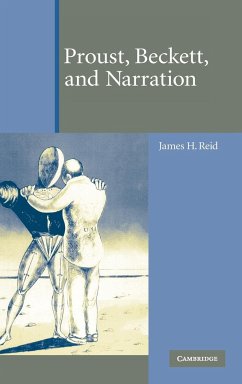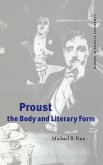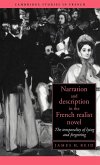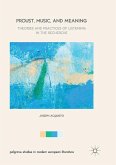Short description/annotation
The first book-length comparison of the narrative techniques of Marcel Proust and Samuel Beckett.
Main description
This is the first book-length comparison of the narrative techniques of two of the twentieth century's most important writers of prose. Using a combination of theoretical analysis and close readings of Proust's A la recherche du temps perdu and Beckett's trilogy of novels, Molloy, Malone dies, and The Unnamable, James H. Reid compares the two novelists' use of first-person narration in constructing and demystifying fictions of consciousness. Reid focuses on the narrator's search to represent the voice that speaks the novel, a search, he argues, that structures first-person narration in the works of both novelists. He examines in detail the significant impact of Proust's writing on Beckett's own work as well as Beckett's subtle reworkings of Proust's themes and strategies. This study is an important contribution to critical literature, and offers fresh perspectives on the crucial importance of the Recherche and the trilogy in the context of the twentieth-century novel.
Table of contents:
Introduction; 1. Remembering forgetting: Le drame du coucher; 2. Impressions, the instant of artistic consciousness, and history; 3. Lying, irony, and power: Proust's deceptive allegories; 4. Proust's forgetful ironies; 5. Molloy's way: the parody of allegory; 6. Moran's way: the forgetful spiral of irony; 7. Malone Dies and the impossibility of not saying I; 7. The Unnamable: the death of the ironical self and the return of history.
The first book-length comparison of the narrative techniques of Marcel Proust and Samuel Beckett.
Main description
This is the first book-length comparison of the narrative techniques of two of the twentieth century's most important writers of prose. Using a combination of theoretical analysis and close readings of Proust's A la recherche du temps perdu and Beckett's trilogy of novels, Molloy, Malone dies, and The Unnamable, James H. Reid compares the two novelists' use of first-person narration in constructing and demystifying fictions of consciousness. Reid focuses on the narrator's search to represent the voice that speaks the novel, a search, he argues, that structures first-person narration in the works of both novelists. He examines in detail the significant impact of Proust's writing on Beckett's own work as well as Beckett's subtle reworkings of Proust's themes and strategies. This study is an important contribution to critical literature, and offers fresh perspectives on the crucial importance of the Recherche and the trilogy in the context of the twentieth-century novel.
Table of contents:
Introduction; 1. Remembering forgetting: Le drame du coucher; 2. Impressions, the instant of artistic consciousness, and history; 3. Lying, irony, and power: Proust's deceptive allegories; 4. Proust's forgetful ironies; 5. Molloy's way: the parody of allegory; 6. Moran's way: the forgetful spiral of irony; 7. Malone Dies and the impossibility of not saying I; 7. The Unnamable: the death of the ironical self and the return of history.








